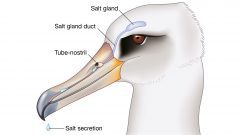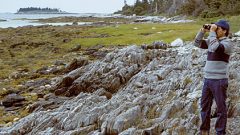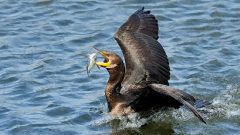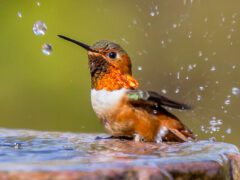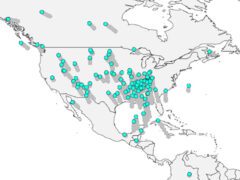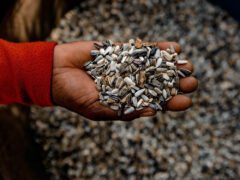Common Eider Similar Species Comparison
Main SpeciesCommon Eider
Male (Dresser's)
Large-bodied sea duck with a sloping profile to the forehead. Note white back, dark sides, black cap, and greenish sides of neck.
© Kojo Baidoo / Macaulay LibraryNew Jersey, January 18, 2021Female (Dresser's)
Large-bodied sea duck with a sloping forehead. Females are rich reddish brown overall with fine blackish barring.
© Evan Lipton / Macaulay LibraryMassachusetts, November 16, 2016Female and juvenile
Breeds on coastal islands or along ponds and lagoons near the ocean. Chicks leave the nest within 24 hours after hatching and can feed themselves, though the female often stays with the young for several weeks.
© Benjamin Clock / Macaulay LibraryMaine, July 16, 2012Immature male (Dresser's)
Immature males have the distinctive sloping eider forehead shape, a dark head, a white breast, and white mottling on the back.
© Kevin Pero / Macaulay LibraryNew Jersey, January 16, 2021Eclipse male (Dresser's)
When molting into breeding plumage, shows dark mottling on back and breast.
© Pat McKay / Macaulay LibraryNova Scotia, June 19, 2017Male (Pacific)
In flight, bulky body and color pattern—dark belly with white upperparts—are distinctive.
© Ian Davies / Macaulay LibraryAlaska, June 06, 2013Male (Eurasian)
Large, bulky sea duck almost always seen on saltwater. Striking white back with black sides and belly.
© Steve Kelling / Macaulay LibraryScotland, March 14, 2013Male (Eurasian)
Large-bodied, bulky sea duck with a black cap and greenish sides of neck, white back, and black belly.
© Will Sweet / Macaulay LibraryHöfuðborgarsvæði, May 25, 2015Male and female (Hudson Bay)
Distinctive sloping profile to the forehead and bill. Females are grayish brown overall with a pale head and fine dark barring on the body.
© Ian K Barker / Macaulay LibraryManitoba, June 14, 2017Female (Northern)
Females are brownish overall with fine dark barring on the back and sides.
© Ryan Schain / Macaulay LibraryMassachusetts, December 10, 2011Habitat (Dresser's)
First winter males are dark brown with variable white mottling and pale or yellow tip to the bill. Females are lighter or more reddish brown with a gray bill.
© Jay McGowan / Macaulay LibraryMaine, July 19, 2014Male and female (Eurasian)
Often forms large flocks with both males and females.
© Brooke Miller / Macaulay LibraryNord-Trøndelag, March 25, 2017Similar SpeciesKing Eider
Male
Male King Eiders have a blockier head than Common Eiders with blue and orange patches on the head. They also have a black (not white) back.
© Ian Davies / Macaulay LibraryAlaska, June 20, 2013Similar SpeciesKing Eider
Female
Female King Eiders have a rounder head than the long sloping forehead of Common Eiders with an upturned line at the bill, giving King Eiders a grinning expression not seen on Common Eiders.
© Ian Davies / Macaulay LibraryAlaska, June 10, 2013Similar SpeciesSpectacled Eider
Male
Male Spectacled Eiders have a white eye patch that Common Eiders lack. They also have a gray (not white) breast.
© Dena Turner / Macaulay LibraryAlaska, June 11, 2016Similar SpeciesSpectacled Eider
Female
Female Spectacled Eiders have a pale eye patch not seen on female Common Eiders.
© Greg Greene / Macaulay LibraryAlaska, August 26, 2016Compare with Similar Species
Click on an image to compare
Species in This Family
Ducks, Geese, and Waterfowl(Order: Anseriformes, Family: Anatidae)
More to Read
Don't miss a thing! Join our email list
The Cornell Lab will send you updates about birds,
birding, and opportunities to help bird conservation.























































